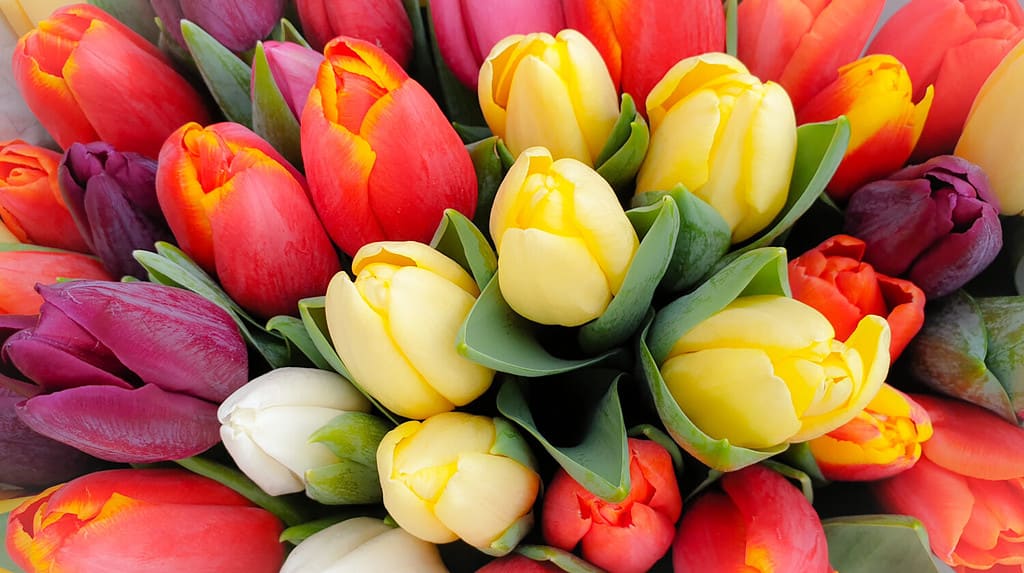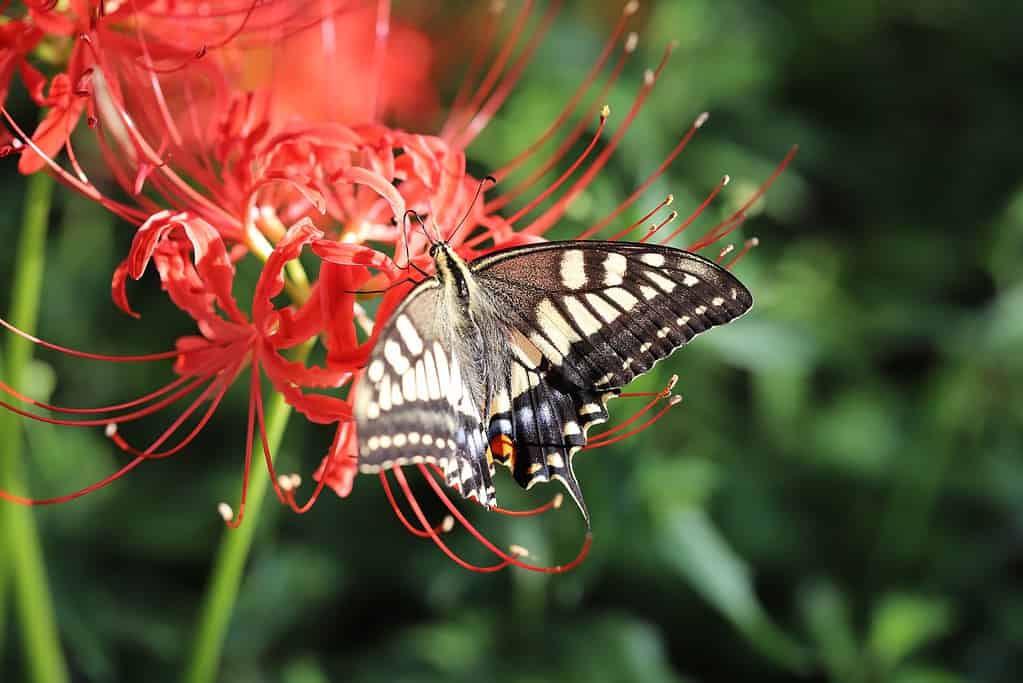Flowers are a beautiful feature of many plant species. For many such species, vibrant flowers are the result of a long evolutionary history with various pollinators. Flowers are effective in attracting either a specific pollinator or a diverse range of pollinators, commonly including bees. Here we will discuss 3 flowers that don’t attract bees and determine what other pollinators they do appeal to.
Bees’ Relationship with Flowers

This Japanese honeybee is an important pollinator.
©Dave Hansche/Shutterstock.com
Bees are important facilitators of pollination that help many species of plants. Pollination is a vital ecological process that is necessary for the reproduction of flowering plants. Among the various pollinators, bees play a crucial role due to their efficient and intricate pollination mechanisms. As bees collect nectar from flowers, their fuzzy bodies inadvertently pick up pollen grains. Subsequently, as they move from one flower to another, these pollen grains are transferred to the stigma, a receptive part of the flower’s female reproductive system. This transfer of pollen initiates fertilization, enabling the development of seeds and fruits. In essence, bees act as intermediaries, ensuring the cross-pollination necessary for the proliferation of diverse plant species in our ecosystem; however, other animal species such as butterflies and moths are important pollinators to plants that do not attract bees.
1. Tulips

Tulips are a lovely, bee-free symbol of spring.
©Heynicepictures/Shutterstock.com
Tulips are one type of flower that does not attract bees. They belong to the lily family and are a household favorite for their vibrant and diverse colors. Their variations span from soft pastels to bold and brilliant hues. Tulips typically feature six petal-like segments spread in a cup-like shape, forming a captivating blossom. The petals can be smooth or have delicate ruffles, adding to their visual appeal. They often grow on tall, slender stems that rise above the surrounding foliage. Native to regions across Eurasia, tulips have become a symbol of beauty, elegance, and springtime renewal.
When it comes to pollinators, tulips rely on various insects to aid in their reproduction. Bees rarely visit tulips they aren’t the primary pollinators for these plants. Instead, bumblebees and solitary bees, which are larger and more capable of accessing the nectar within the tulip flowers, are better suited for this task. These bees navigate into the tulip’s blossoms, encountering the flower’s reproductive parts and transferring pollen from one flower to another. This process allows for cross-pollination, enhancing genetic diversity and contributing to the overall health of tulip populations.
2. Spider Lilies

Butterflies are common pollinators of spider lilies, such as this swallowtail on a red spider lily.
©Tasak/Shutterstock.com
Spider lilies are beautiful flowering plants with a distinctive and unique appearance. These plants have characteristic graceful and delicate flowers, which often bear a resemblance to a spider. They have long, slender petals that stretch out like legs. The petals are usually white or cream-colored and may have intricate patterns or markings near the center of the flower. The center of the flower has a prominent cluster of stamens that adds to its allure. Spider lilies typically grow on long stems rising above the foliage, making them stand out in gardens and landscapes.
Spider lilies are often pollinated by nocturnal insects, particularly moths. The flowers of spider lilies emit a pleasant fragrance during the evening to attract these pollinators. Bees are most often diurnal; therefore, these flowers are not particularly attractive to them. Moths, however, are drawn to the scent and the pale color of the petals. They stand out against the darker surroundings at night. As moths visit the flowers for nectar, they brush against the flower’s reproductive structures, transferring pollen from one flower to another. This nocturnal pollination strategy ensures that spider lilies can reproduce and produce seeds.
3. Geraniums

Geraniums, especially red germaniums, are not attractive to bees.
©Jane Nadezhina/Shutterstock.com
Geraniums are a popular group of flowering plants that have beautiful flowers, but little pollen. They are therefore not very attractive to bees. In fact, they have a scent that repels some stinging bee species. These plants exhibit a wide array of flower colors, including shades of pink, red, white, and purple. They also often have intricate patterns on their petals. The flowers are symmetrical, typically comprising five petals around a central point. Geranium leaves have deep lobes and emit a pleasant fragrance when touched. They can range from glossy to velvety textures, adding to their visual and tactile appeal.
When it comes to pollinators, geraniums may attract a diverse range of insects, including butterflies. Butterflies, with their elongated proboscises, can access the nectar from the complex flower. It is difficult for other species like bees, however. Although they may occasionally visit, geraniums are not considered strong attractors of bees or other typical pollinator species.
The photo featured at the top of this post is © AGAMI stock/iStock via Getty Images
Thank you for reading! Have some feedback for us? Contact the AZ Animals editorial team.






